On shore and underwater
The best way to see the Galapagos is by boat – luckily we have the freedom to book late – late bookings get a very substantial discount on some boats. The one we picked was nearly half it’s original price. Even then it is not a cheap exercise, but neither is staying on land and doing day trips – in fact that can be even more, depending on what you want to see. And of course some places are too far for day trips. 2 of the people on our boat had already done the “East” tour – 2 cruises in a row, nice if you have money to burn. We had worked out we would see all bar 2 things on the “West & North” tour, the Flightless Cormorant and the Mangrove Finch. Would have been nice but not for the cost of another few days aboard. We also missed actually swimming with penguins (did see one though).
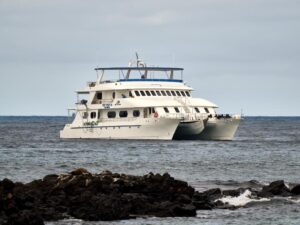
The amount of sealions and turtles visible from the boat when moored was incredible.
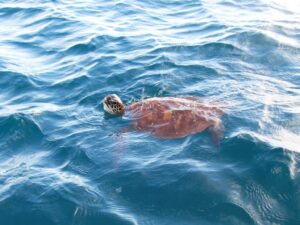
All guests were supposed to arrive on the morning flight, but for some reason a large group of 10 (boat only has 15 passengers) were not arriving till late afternoon. This cut our afternoon excursion down by a few hours, especially when their plane was late as well. Instead of a few hours on Bachas Beach we managed 45 minutes before it got dark. The other boats here were all leaving as we arrived – nice. Still we saw the main targets of Flamingo’s and other small birds. Lots of marine Iguana’s too.

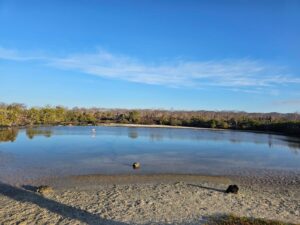
The best thing of all is that the large group had their own guide, leaving just 5 of us with a naturalist – so much better than being in a big group.
There are also lots of Sally Lightfoot Crabs, large red crabs with blue and yellow , pretty.
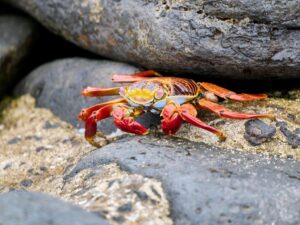
A great sunset and dinner before setting off for a 6 hour very bumpy ride to Darwin Bay on Isla Genovesa (bird island). What an amazing island even though it was misty, rain on and off with a very cool wind.
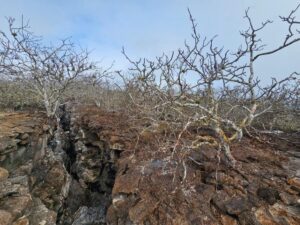
Plenty of Galapagos Sealions and a few Galapagos Fur Seals (which are apparently also a sealion). 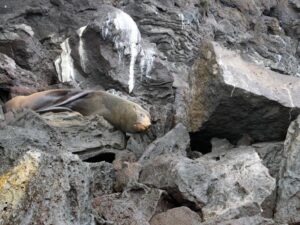
The hardest thing to spot was a Short Eared Owl, they blend in so well and are not usually close
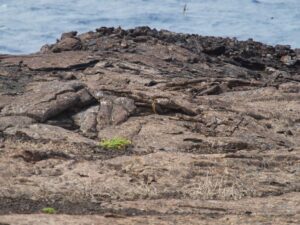
Spot the owl above, this is already a very cropped picture.
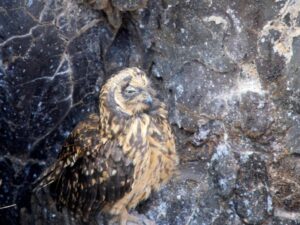
and some very attractive Swallowtail Gulls and pretty Doves.
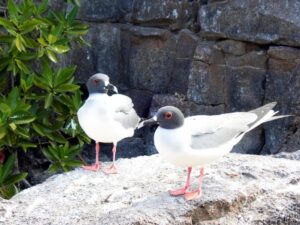
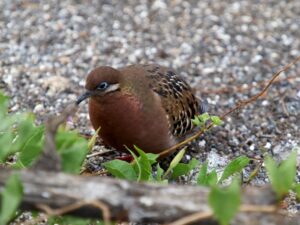
The island itself looks quite barren but holds an impressive number of bird species as well as the animals. Nazca & Red-Footed Booby’s are nesting everywhere, Frigatebirds, gulls, pelicans and small finches.
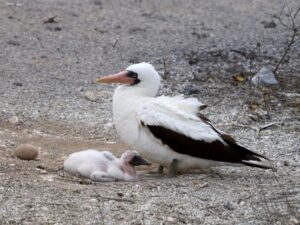
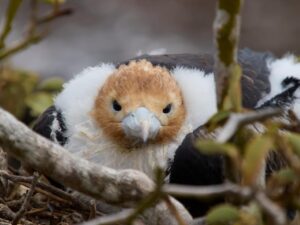
Our first snorkelling spot is here – the water is cold at 18 degrees and the clarity is not brilliant but so fun to swim with the sealions and surprisingly a large amount of big colourful fish.
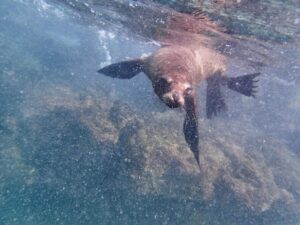
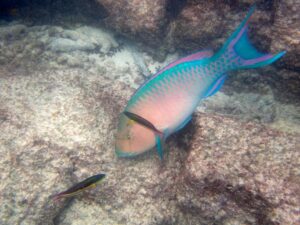
Another bumpy 6 hour crossing back to South Plaza. Our first look at some lovely Yellow Land Iguana’s and new birds like the Lava Gull (with chicks).
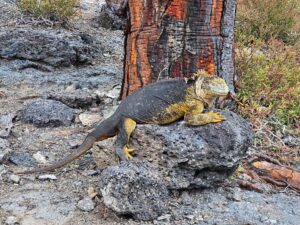
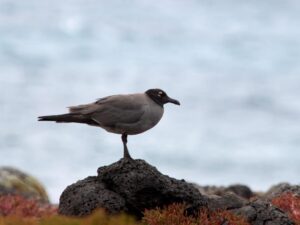
This island is low with some very pretty pink vegetation at this time of year – green at other times.
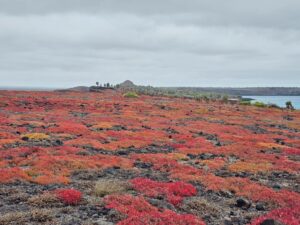
A shorter daytime crossing to Santa Fe for some more snorkelling – going South so now the water temperature is even colder at around 16 or 17. Huge schools of fish and more sealions, sharks and turtles.
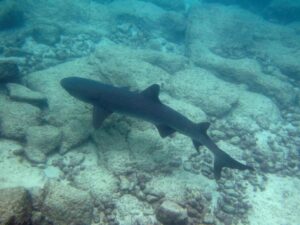
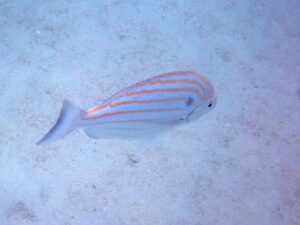
Lots of very young sealions on the beach some only days old – so cute.
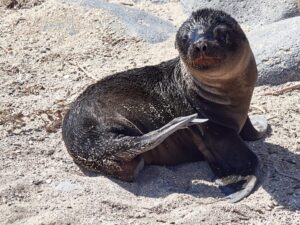
But steer clear of the bull’s.
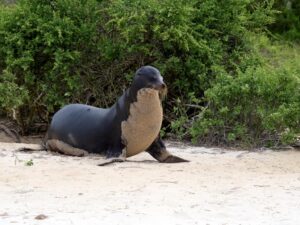 Santa Fe has a lot more trees and vegetation in general including some cactus trees that are up to 400 years old.
Santa Fe has a lot more trees and vegetation in general including some cactus trees that are up to 400 years old.
This one is around 200 years old.
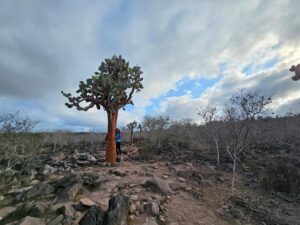
The Land Iguana’s on this island are Green, quite different to the Yellow Land Iguana’s.
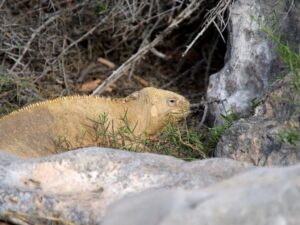
There is a 3rd species (Pink Iguana) but this is in an area where tourists are not allowed. The rarest bird here is the Galapagos Hawk and we were lucky to see a couple of youngsters.
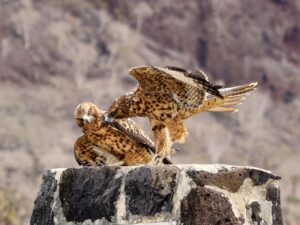
A short hop back to Santa Cruz for a day on land visiting the Charles Darwin Research Centre and the highlands to find the Galapagos Tortoise. The research Centre are breeding the endangered saddleback Tortoises, not as good as seeing in the wild though. The larger ones live on Islands with more rain and more food.
Wow – the Galapagos Tortoise (not saddle back) are everywhere, on farms, on the roads, pavements etc. I had not realised they are so plentiful in the wild here. Quite a sight. As well as the Tortoise a number of different finch inhabit the highland areas.
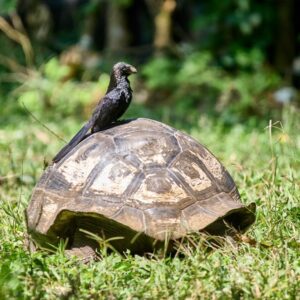
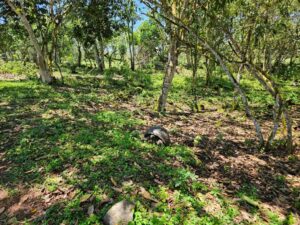
On to Floreana Island and Post Office Bay – a place used long ago by passing ships to leave mail and parcels for other ships to take if they were going that way. It is still used by us tourists – we are told it works very well and I am sure it does especially if you are American or German – the 2 largest groups of visitors. We looked through the pile but only about 3 for Australia and only 1 from South Australia – still 335km from us (the idea is that you take what you can hand deliver). We will see if our’s ever make it back to the grandchildren. 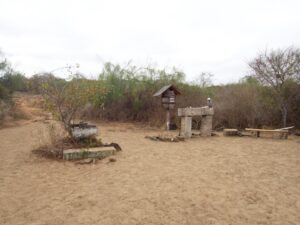
If they do they will beat Panama (post), Costa Rica (post) and Guatemala (by DHL) none of which have arrived so far after 3 – 5 months.
More snorkelling (even colder, down to 15-16. I am wearing thermals under a wetsuit and still 45 mins is most I can stay in the water, and that is a struggle.
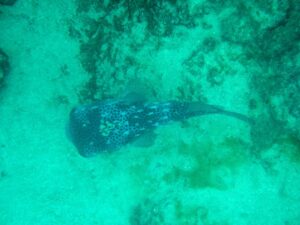
There are many many turtles but not so much variety of other stuff and really bad visibility. In the surf there were Diamond Stingray – pity I did not see them until out and dry as not good photos from above the water.
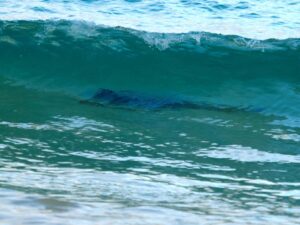
Back on board the youngest person in the other group (9) spotted a Humpback Whale and Calf, great to watch and they came very close to the boat.
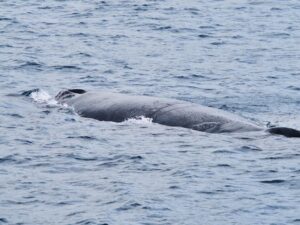
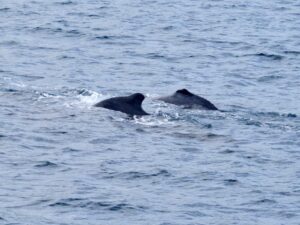
A quick visit to Champion Island for our last (and coldest) snorkelling. Not so much variety but clearer water and the most playful sealions.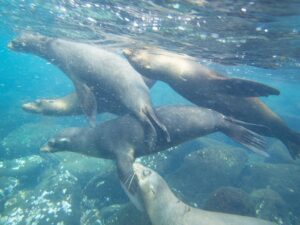
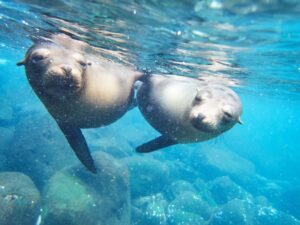
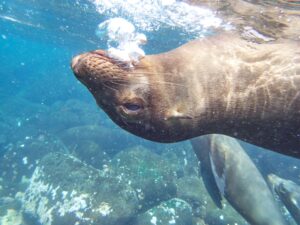
Then a great Sunset before overnight (bumpy again) to Espanola Island.
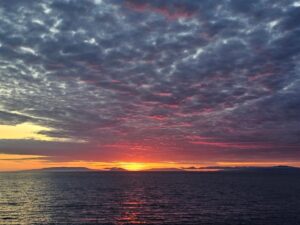
The Marine Iguana on Espanola are in amazing quantities and much bigger than on some other islands, between them, the sealions, crabs and lava lizards you have to watch every step not to tread on something.
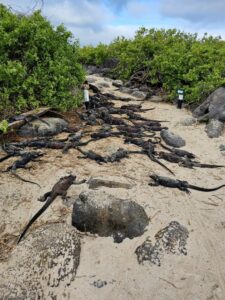
We were also lucky enough to see an Espanola Racer Snake.
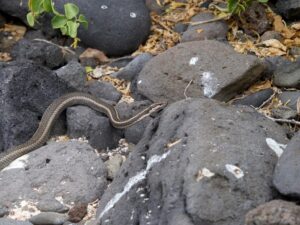
Blue Footed Booby’s and Waved Albatross nest all over this island and watching the mating dance of the Albatross is amazing, not quite as impressive in my photos though.
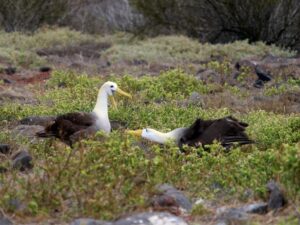
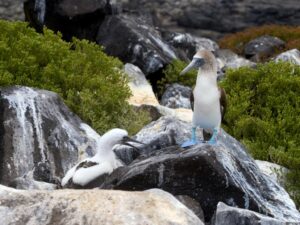
Love the colour on the island too.
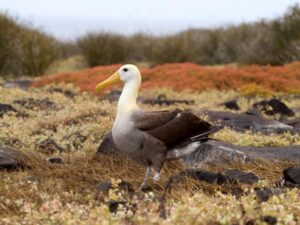
San Cristobal Island for more snorkelling (except all 5 of us piked out, enough cold water), a new Mockingbird and general beach time. The beaches are very reminiscent of Kangaroo Island and Western Australia – odd.
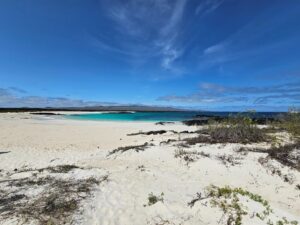
Circumnavigating Kicker Rock and then off to Los Lobos Island – our last day – more seals in huge colony’s, more nesting Frigatebirds and Blue Footed Booby’s too.
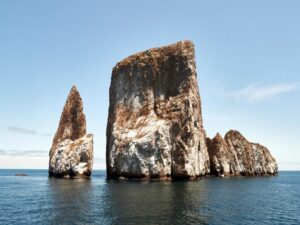
A brief mangrove tour on the Panga at sunrise before heading back to Santa Cruz and the end of the tour.
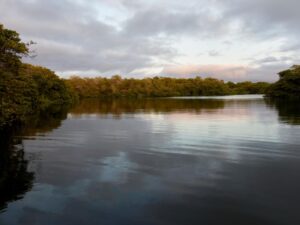
Next three days spent in Santa Cruz not doing much as really tired after 7 nights on boat with interrupted sleep due to weather conditions.
So many more pictures in the gallery, good and otherwise. Next stop Brazil.
BIRD & WILDLIFE IDENTIFIED:
Birds:
Band-rumped Storm-Petrel
Blue-footed Booby
Common Cactus-Finch
Dark-billed Cuckoo
Elliot’s Storm-Petrel
Espanola Ground-Finch
Espanola Mockingbird
Floreana Mockingbird
Galapagos Dove
Galapagos Flycatcher
Galapagos Hawk
Galapagos Mockingbird
Galapagos Penguin
Galapagos Petrel
Galapagos Shearwater
Genovesa Cactus-Finch
Genovesa Ground-Finch
Green Warbler-Finch
Grey Warbler-Finch
Large Ground-Finch
Large Tree-Finch
Lava Gull
Medium Ground-Finch
Medium Tree-Finch
Nazca Booby
Red-billed Tropicbird
San Cristobal Mockingbird
Small Ground-Finch
Small Tree-Finch
Swallow-tailed Gull
Vegetarian Finch
Wandering Tattler
Waved Albatross
Wedge-rumped Storm-Petrel
Woodpecker Finch
Reptiles
Espanola Racer Snake
Wildlife
Galapagos Fur Sealion
Galapagos Sealion
Galapagos Tortoise
Green Sea Turtle
Humpback Whale
Underwater
Black Tipped Reef Shark
Diamond Stingray
Giant Hawkfish
Green Sea Turtle
Long Tailed Stingray
White Tipped Reef Shark
THINGS TO DO
Cruise the islands – West and East in separate cruises or stay on one of the 3 inhabited islands and do day trips.
You will see more on a cruise, but day trips are a cheaper option. All depends on what your priorities with both money and what you want to do/see.
Best Islands for wildlife are Genovesa & Espanola Island – but they all have specialties especially for birders.
WHERE TO STAY
We only did a cruise and stayed at a hostel in Santa Cruz.
Pretty nice place at a good price (for the area) – La Peregrina
WHERE TO EAT
On board with a cruise.
COSTS
GALAPAGOS NATIONAL PARK:-
2 different costs. 20 USD per person and 200 USD per person – not cheap and not good as not much of the 200 (supposed National Park fee) actually gets anywhere near the islands.
ALCOHOL:-
100 Baht upwards for a can of beer in a restaurant.
MEAL:-
6 USD and up in a restaurant, cheaper on street stalls.

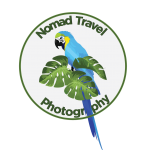

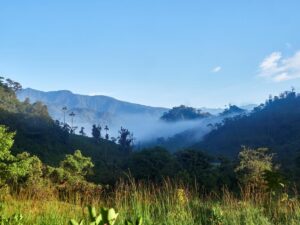
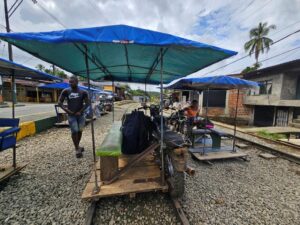

Hi Carol and Steve it looks lovely neat wildlife and photos thanks